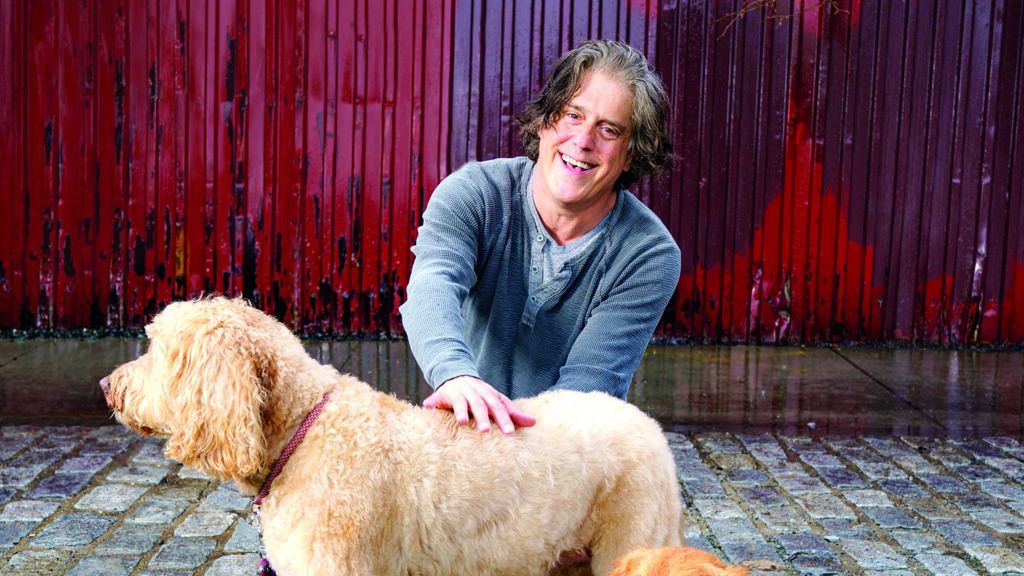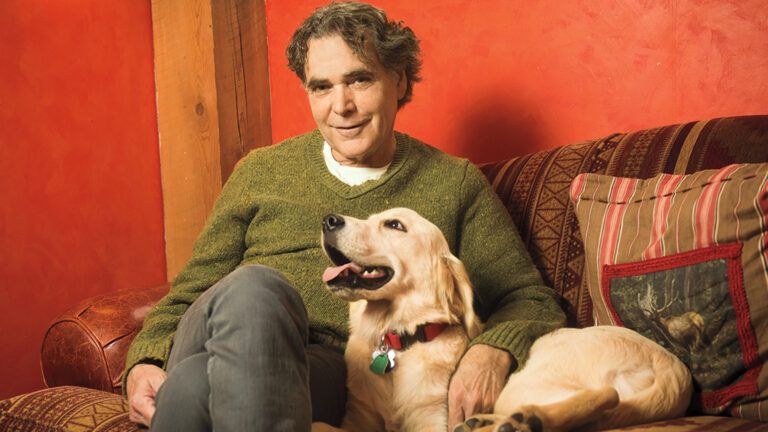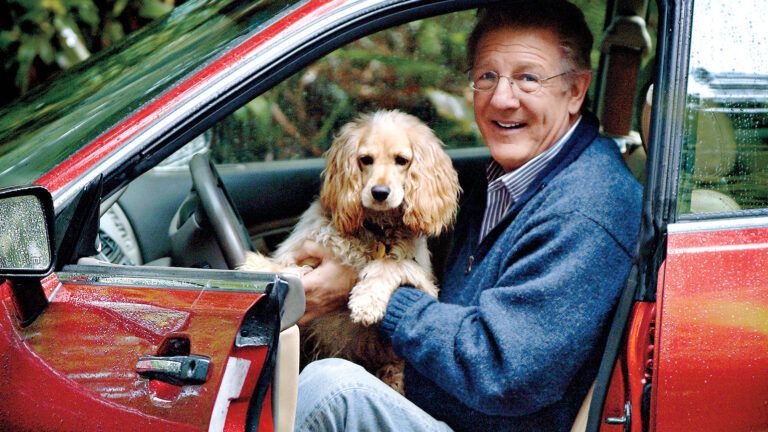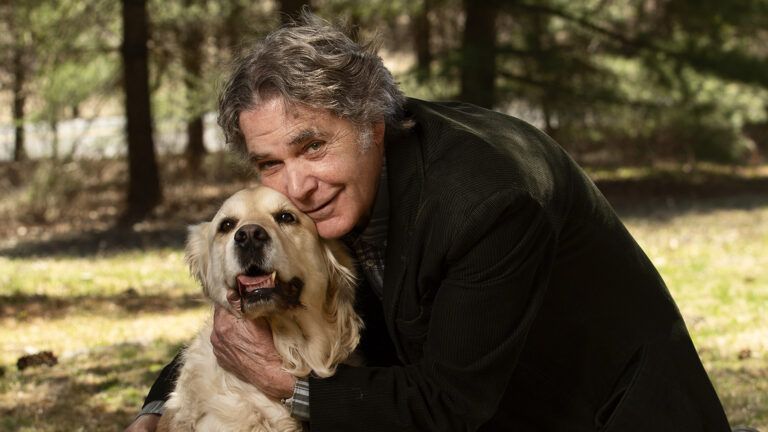As a set designer for Saturday Night Live, New Jersey-based Ken MacLeod was all too familiar with working under pressure. So, when pandemic puppy mania turned Ken’s dog training side gig into a demanding business, he was ready.
Did you have pets growing up?
My family had cats. It wasn’t until I met my fiancée, Kim, 14 years ago that I completely fell in love with dogs. She had a Parson Russell Terrier named Mac.
When did you become interested in set designing?
In college, I originally set out to be a business major. I soon realized that I was unable to express my creativity in the accounting world and needed to make a change. I had always been captivated by film sets and the process behind designing them, so it felt natural to go into film design.
How did you get the job at Saturday Night Live?
Ten years ago, the commercial industry—where I had spent most of my career—began to change. As a result, I found myself looking for other opportunities within the film industry and began doing work in episodic television. At the time, Kim was working at SNL as a set decorator and mentioned that there was an opening for a set designer within one of the three film units. I applied immediately and have been working there for the past seven seasons.
Are the rumors true about how intense the work is at SNL?
Oh, yeah. We work long nights, but it is incredibly rewarding when you see the show air that weekend. Pre-pandemic, we would often shoot in different locations (like supermarkets or high schools), but now we are working in a studio in Brooklyn, designing and building these environments from scratch. The typical schedule starts on Wednesday evening when we get the script and hop on a Zoom call with producers, directors and crew. That night, I start to design the sets, and the next two days are filled with prop shopping, lighting, painting and more.
How did Scooter come into your life?
When Mac passed, Kim and I were devastated. After a few months, we decided it was time to bring a new puppy into our home. We began searching with the intention of making them a therapy dog. Those few months without Mac made me realize the huge role dogs play in our lives and the joy that was missing in mine as a result. It was only right to train our new puppy to be this positive influence for other people in the same way that Mac was for us. In January 2017, we brought Scooter home from Chicago. Scooter was the smallest and most precious dog I had ever seen. But it took only a few weeks to realize that Scooter’s temperament was different from Mac’s and would require different training and attention.

When Scooter was four months old and we began to take him for walks outside, we immediately noticed his fearful nature. For fearful dogs, it’s either fight or flight, and Scooter had no intention of flying. He barked and lunged at other dogs and had difficulty interacting with people as well. After our first few walks, I realized I wanted to be a certified dog trainer to better understand and grapple with Scooter’s needs as a reactive dog.
Why did you choose the Karen Pryor Academy?
After researching several training programs, I was most impressed with Karen Pryor Academy’s force-free positive training method. You had to prove that you and your dog had done the work in order to become certified. I wanted to be taught and tested, so this program was perfect for me. It was intense—four workshops over six months in Binghamton, New York. We had homework—reading and writing, as well as physical work. One was targeting, where you teach your dog to touch something with his nose. You had to show that your dog could do the behavior.
How did Scooter react to the training?
Our first weekend, Scooter had a difficult time adjusting to a classroom environment—and the other dogs in the room didn’t help. It took until the third class for Scooter to be fully comfortable and embrace the different learning techniques we were practicing. I was so proud of how far he had come but nervous for the final exam, as it was off leash and in front of everyone else in the class. The exam consisted of demonstrating a series of behaviors, such as sit, leg weave, stand, spin, paw and target. When the time came, I took off his leash and said, “This is it, buddy.” He nailed it.
Can you share some of the methods you learned and use?
The most effective method I have learned is positive reinforcement. It’s all about rewarding the good behaviors. Like people, dogs are more likely to fully embrace both the learning and you as a trainer through praise. I like to encourage dogs in their good behaviors rather than express frustration when they do not understand what I am asking in a language they don’t speak.
What made you take it a step further and start a training business?
I jumped in right away after I got my certification. Knowing that there were so many other reactive dogs like Scooter, I wanted to help as many families as possible. The business began small, helping my neighbors, friends and family, and has grown into what it is today.
How did the pandemic change your business?
When lockdown first occurred in March 2020, I shifted my main focus from set designing to dog training. All over, families were adopting dogs, increasing the demand for dog training. My Positive Pup transitioned from a small neighborhood business to an almost full-time position. I had the pleasure of working with a variety of families from Vermont to New Jersey, imbuing each family with a sense of positive reinforcement.
There are some 52,000 people in Hoboken, where I live, and there must be 60,000 dogs now! Training became easier, especially for fearful and reactive dogs, because we’ve had far fewer triggers on the streets, like cars, bikes, other dogs and people. If there is any silver lining to 2020, reactive dogs have been introduced to society with more ease than before.

There’s definitely a correlation between working on SNL and dog training. I started with a handful of stagehands who were excellent team players but new to the world of working on location. I realized that the best way of teaching them the ins and outs of this role was complimenting them on their achievements. They were excited to come to work every day and were eager to learn more. This goes for any training. When you reward with praise and kindness, it results in a positive environment where the trainee’s enthusiasm shines through.
What do people misunderstand about dog training?
Dog training should be about fun and growth. Reward and praise. It’s about the difference between having a dog who is living and a dog who is living engaged. Bringing a dog into your family is a lot of responsibility, but with great love and care it is one of the greatest gifts you can ever experience.
For more inspiring animal stories, subscribe to All Creatures magazine.





